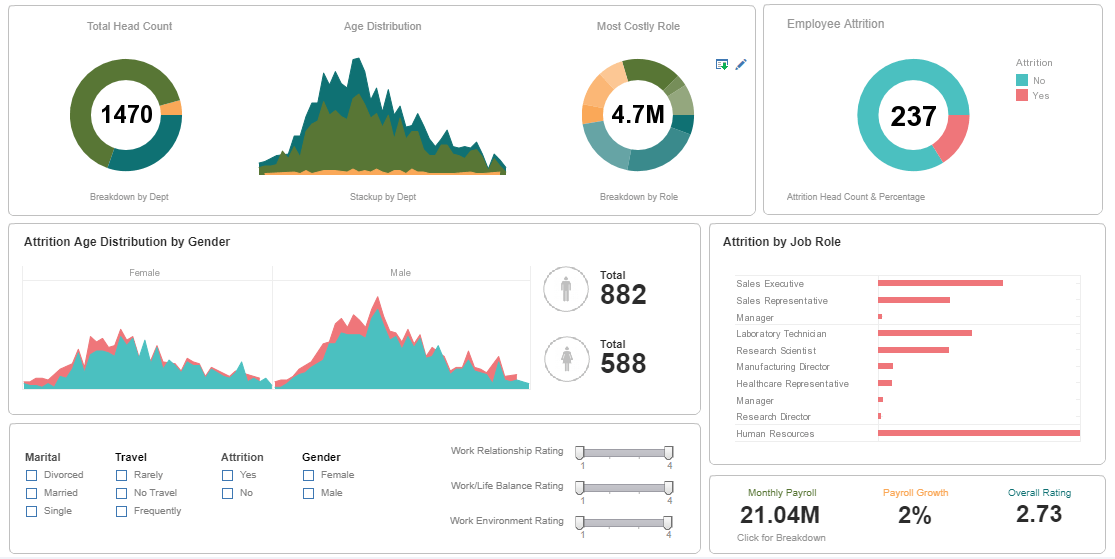Understanding the Changes that Come From Operational BI
This is the continuation of the transcript on "Facing the Challenges of Operational BI" hosted by InetSoft. The speaker is Jessica Little, Marketing Manager at InetSoft.
Just understanding how a customer service rep or a sales representative or something like that, how do they go about doing their job, is key. Employees are very different today than they were 10, 20 years ago. A lot of them are very mobile. They may even be virtual workers.
So we need to understand how they interface with the technologies, for example, do they now use the Internet or Intranet? Do we need to create portals and dashboards that bring together the operational data as well as the operational BI results? How will this be used to create this business solution that’s needed by the users.
So these are the good questions to be asking. How will the operational BI solution itself integrate with the existing business solutions through this dashboard or this portal? For example, if we have a customer relationship management system already in place, for example like Siebel or something, it’s heavily being used by our customer service reps.
Integrating BI Applications with CRM
Now we need to understand well, how will these operational BI applications integrate with that CRM system? Where are the hooks? Where is the interface? Where does it work together? One of the things that we certainly recommend with our clients is that they develop some kind of a prototype. That seems to be a really good way to test out whether or not this is even going to work.
I think some final advice perhaps, once you understand what you do, making sure that you understand how these hooks are going to go into the operational system, you are not done, yet. Obviously, you have understood how to interface it with the operational system. You understand the processes and procedures.
They have been perhaps rewritten to integrate the operational BI processes with them. But there is one other thing that really does need to happen, and that is that the operational people, the personnel themselves need to be perhaps retrained or well trained and ready to use the operational BI system.
Ways to Train BI Users
Now there are many ways to doing this. You can have classroom training, for example. You can have some kind of self study or a computer-aided training or whatever. But as I mentioned, perhaps using the prototype itself is your best way to get these basics across to these operational personnel.
You also want to prepare for resistance. Operational BI is a new thing. It’s a change. It’s a change in the way that people will do their business processes, and none of us likes change. So we need to recognize this up front. This is a real change in the way operational people go about their daily business.
So we probably need to be thinking about something like a change agent, for example, someone whose responsibility it is to deal with the inevitable pockets of resistance that you are going to run into. You need to see where this resistance is going to come from.
And lastly, there may be a situation, unfortunately, sometimes it happens, where you just run into determined resistant people, people that don’t want to change like the way they have been doing business and simply will not accept the new operational business intelligence environment. If that’s the case, then you may have to look at hiring some new people. I have found in my experience that most operational personnel are just tickled pink. They have their jobs made easier by having operational BI at their fingertips.

Measuring Success of Operational BI Implementation
Once the operational BI system is in place, it’s important to establish metrics to measure its effectiveness. These metrics might include improvements in response times, increased accuracy in reporting, or higher employee satisfaction. Regularly reviewing these indicators helps ensure that the BI solution continues to deliver value and meets the evolving needs of the business.
Feedback from users is also crucial for ongoing improvement. Encourage operational personnel to share their experiences and suggestions for enhancements. This collaborative approach not only helps refine the BI system but also fosters a sense of ownership among users, making them more likely to embrace new processes and technologies.
Finally, keep in mind that operational BI is not a one-time project but an ongoing journey. As business requirements change and new technologies emerge, the BI system should be revisited and updated. Continuous training, regular system evaluations, and open communication channels will help organizations maximize the benefits of operational BI and stay competitive in a dynamic environment.


